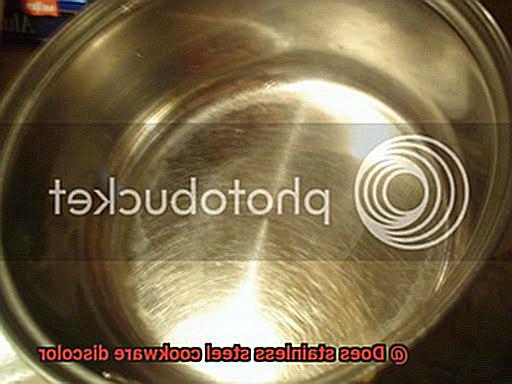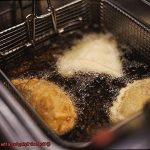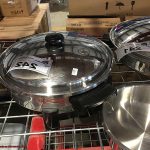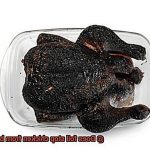Hey there, fellow cooking enthusiasts. Sick of buying cookware that loses its shine and lustre after just a few uses? Fear not, because I’m here to uncover the truth about the age-old question – does stainless steel cookware discolor?
Stainless steel is a popular choice for both home cooks and professionals alike, thanks to its durability and sleek appearance. But let’s face it, nobody wants their shiny new pots and pans to turn into unsightly yellow or brown stains. So, is discoloration just an inevitable part of using stainless steel?
In this blog post, I’m going to dive deep into the root causes of stainless steel discoloration and give you some handy tips and tricks to prevent it from happening. From the types of food you’re cooking to the temperature of your stove, there are plenty of factors that can affect the appearance of your cookware. But don’t worry – armed with the right knowledge and care, you can keep your stainless steel looking brand-spanking-new.
So whether you’re a seasoned pro or a newbie in the kitchen, get ready for all the juicy details about stainless steel cookware discoloration. Trust me, your pots and pans will thank you for it.
Contents
Does Stainless Steel Cookware Discolor?
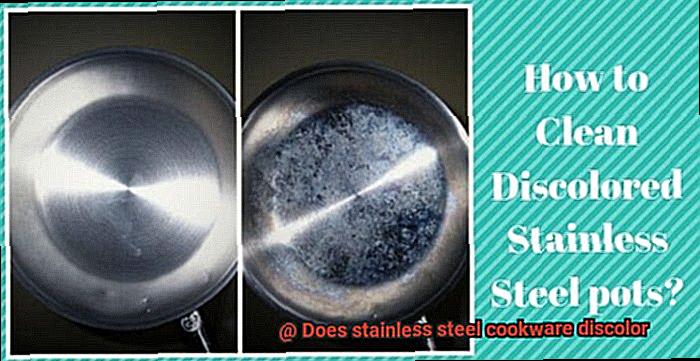
Stainless steel cookware is a beloved choice for its durability, non-reactive nature, and even heating ability. But as with any kitchen tool, it’s important to understand its potential flaws and how to prevent them. One common concern with stainless steel cookware is whether it will discolor over time with use. The answer is yes, but it’s not a simple yes.
Discoloration can occur due to various factors, including hard water, overheating, and exposure to acidic foods. Hard water is a common culprit that can leave behind white spots or streaks on the surface of your cookware due to the minerals in the water. To prevent this type of discoloration, consider using a water softener or filter to reduce mineral buildup.
Overheating is another factor that can cause discoloration in stainless steel cookware. When you exceed the maximum temperature limit of your cookware, it can cause “heat tinting,” which makes the metal turn brown or blue. To prevent this type of discoloration, always use a thermometer to monitor the temperature of your cookware.
Acidic foods like tomatoes or vinegar-based sauces can also cause discoloration on stainless steel cookware over time. Extended exposure to these types of foods can result in rainbow-like discoloration on the surface. To prevent this type of discoloration, clean your cookware immediately after use and avoid leaving acidic foods in your cookware for long periods.
Improper cleaning methods are another factor that can lead to discoloration in stainless steel cookware. Using harsh abrasives or steel wool on the surface can cause scratches that make the metal more susceptible to stains over time. Instead, use a mild dish soap and a soft sponge to clean your cookware after each use.
Causes of Discoloration on Stainless Steel Cookware
When it comes to kitchen essentials, stainless steel cookware is a go-to for many cooks. With superior durability, easy maintenance, and the ability to withstand high temperatures, it’s no wonder why. However, discoloration on stainless steel cookware can be a common issue that many cooks face. Fortunately, by understanding the causes of discoloration and taking some preventative measures, you can keep your cookware looking like new.
Heat is one of the primary culprits of discoloration on stainless steel cookware. Overexposure to high temperatures is often the cause of a blue or brown tint that can be especially noticeable on the bottom of your pots and pans. To avoid heat-related discoloration, it’s essential to use the correct heat setting for your cooking needs and avoid leaving your cookware on high heat for too long.
Food residue is another common cause of discoloration on stainless steel cookware. When left on the surface of your pans for an extended period, food particles can burn onto the metal and create stubborn stains that can seem impossible to remove. To prevent this, make sure to clean your cookware thoroughly after each use with a gentle cleaning solution and some elbow grease.
Water stains are yet another culprit of discoloration on stainless steel cookware. The minerals present in hard water can leave behind unsightly spots and streaks. To prevent water stains, it’s best to dry your cookware thoroughly after washing. If you live in an area with particularly hard water, consider investing in a water softening system for your home.
How to Prevent Discoloration on Stainless Steel Cookware
Stainless steel cookware is a kitchen essential that offers durability and a non-reactive surface. However, over time, discoloration can occur, diminishing its aesthetic appeal and even affecting performance. Here are some practical tips to prevent discoloration on your stainless steel cookware.
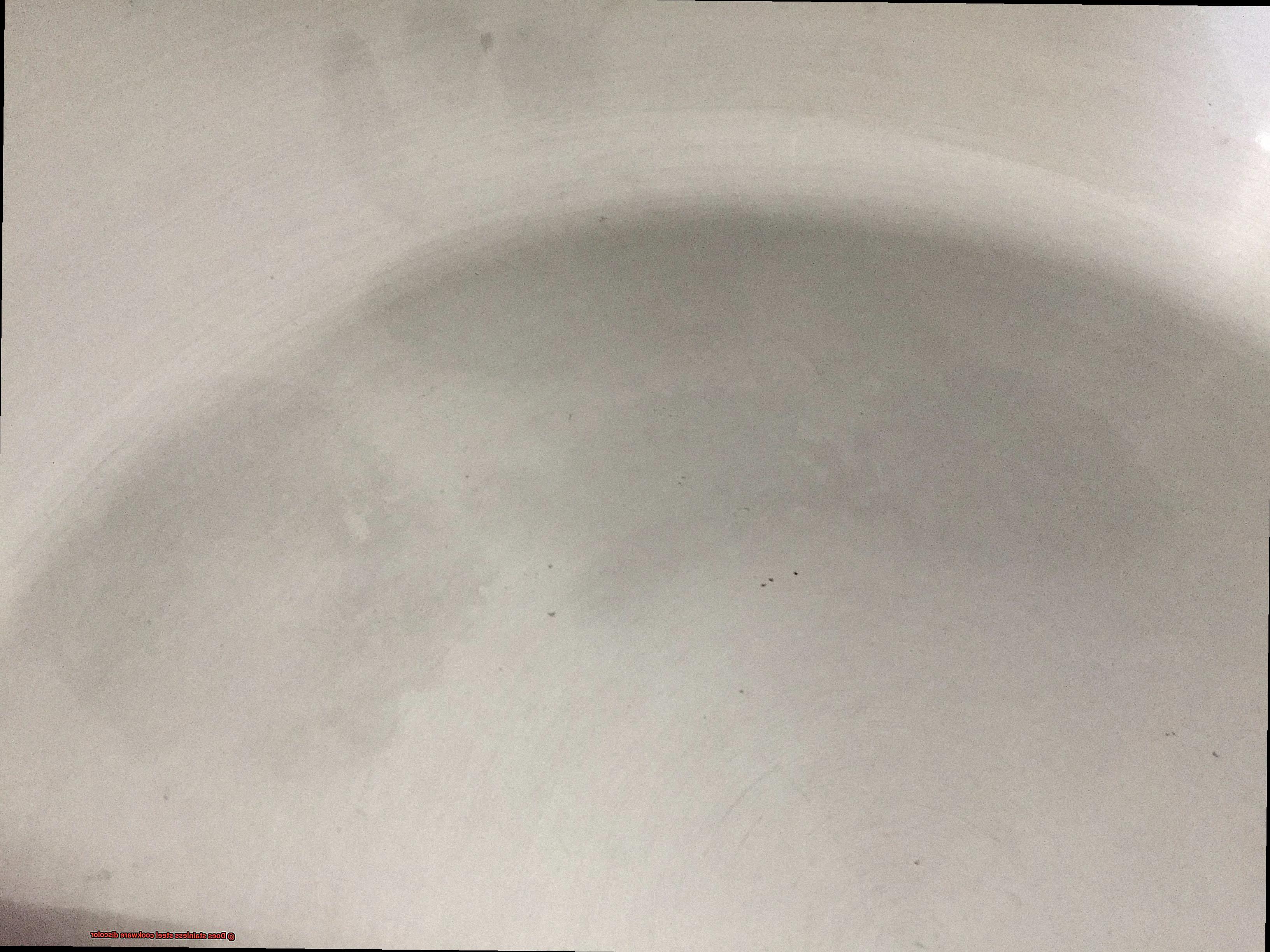
Lower the Heat
While stainless steel is known for its ability to withstand high heat, exposing it to extremely high temperatures can cause discoloration. To prevent this, use medium to low heat settings when cooking with stainless steel pots and pans. Additionally, using heavy-bottomed cookware can help distribute heat evenly and prevent hot spots that can cause discoloration.
Preheat with Care
Overheating can warp the metal and change its color permanently. To avoid this, preheat the pan before adding food, which can help prevent overheating. Using a lid while cooking can also help retain heat and prevent the need for high heat settings.
Watch Out for Acidic Foods
Acidic foods like tomatoes or vinegar-based sauces can cause rainbow-like discoloration on the surface of your stainless steel cookware if left for extended periods. Instead of skipping them altogether, you can use a non-reactive liner such as parchment paper or a ceramic coating to protect your cookware.
Clean Gently
Using abrasive cleaners or scrubbers can scratch the surface of the metal and cause discoloration over time. Instead, use non-abrasive cleaners and soft sponges or cloths when cleaning stainless steel cookware. Moreover, avoid leaving acidic foods in the pan for prolonged periods.
Dry Thoroughly
Always dry your cookware thoroughly after washing to prevent water spots from forming. You can use a clean towel or air dry it in a well-ventilated area to avoid moisture buildup.
Hard Water and Its Effects on Stainless Steel Cookware
Stainless steel cookware is a kitchen staple, but hard water can quickly dull its shine and make it look more like a relic than a reliable tool. Hard water is water that contains high levels of minerals such as calcium and magnesium, which can leave behind stubborn mineral deposits on your stainless steel cookware. In this article, we’ll explore the effects of hard water on stainless steel cookware and share some insights on how to keep your pots and pans looking their best.
WHITE SPOTS AND STREAKS
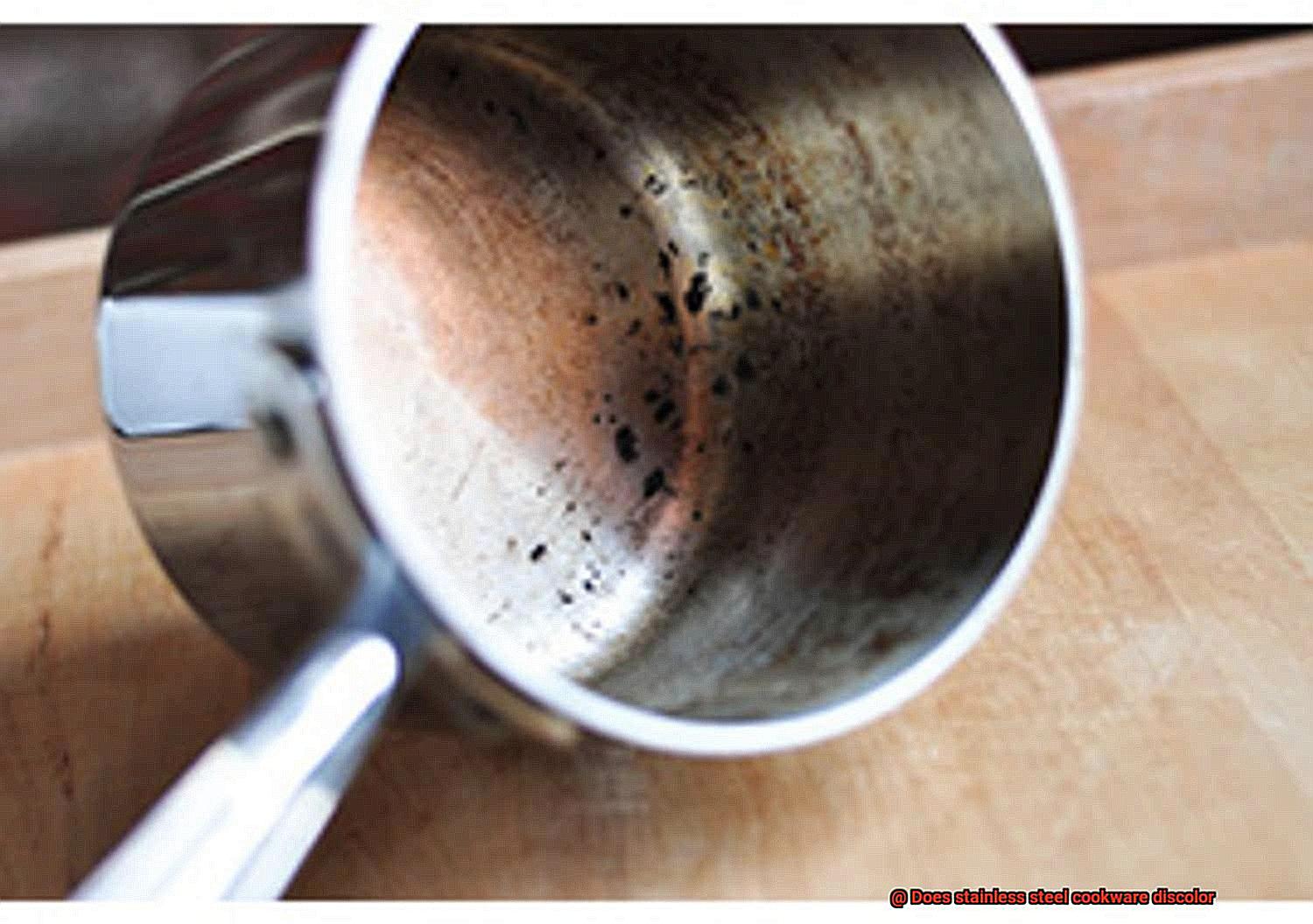
One of the most noticeable effects of hard water on stainless steel cookware is the appearance of white spots or streaks. These unsightly blemishes are caused by the minerals in the water reacting with the metal in the cookware. While they may not impact the performance of your cookware, they can be frustratingly difficult to remove.
DULL, HAZY FILM
Another effect of hard water on stainless steel cookware is the development of a dull, hazy film. This film is caused by mineral deposits building up on the surface of the cookware over time. It can be tough to remove and may require more aggressive cleaning methods.
PREVENTING THE EFFECTS OF HARD WATER
To prevent the negative effects of hard water on your stainless steel cookware, it’s essential to use gentle cleaning solutions and dry your cookware thoroughly after each use. If you do notice white spots or streaks, you can remove them by soaking the affected cookware in a mixture of equal parts vinegar and water for several hours before gently scrubbing with a soft-bristled brush and rinsing thoroughly.
PROTECTING YOUR INVESTMENT
Your stainless steel cookware is an investment that you want to last for years to come. By taking preventive measures against hard water damage, such as using filtered water or installing a water softener system, you can protect your investment and keep your stainless steel cookware looking its best.
Overheating and Its Effects on Stainless Steel Cookware
You may think that stainless steel is indestructible, but it can be vulnerable to excessive heat. So, let’s explore this topic in detail.
Overheating is a major culprit behind the discoloration of stainless steel cookware. High temperatures can cause the metal to lose its natural shine and develop a thin layer of oxide on the surface, which can range in color from yellow to blue to brown. This phenomenon is known as heat tinting or heat discoloration, and it can be disheartening to see your once-gleaming cookware turn dull.
However, discoloration is not the only effect of overheating. It can also lead to warping, pitting, and even cracking in more severe cases. The rapid expansion and contraction caused by high temperatures can result in structural damage that can impact the performance of your cookware.
So, what measures can you take to prevent overheating and safeguard your stainless steel cookware? The key is to use proper heat settings and cooking techniques. It’s best to stick to low to medium heat when cooking with stainless steel and avoid preheating an empty pan for too long. This will ensure even heat distribution, preventing hot spots that can damage your cookware.
If your stainless steel cookware has already been discolored due to overheating, don’t despair. There are effective solutions available to restore its appearance. You can try using a mixture of baking soda and water to gently scrub the surface of the pan or use specialized stainless steel cleaners that are designed to remove heat discoloration. It’s crucial to follow instructions carefully and avoid abrasive cleaners or scrubbers that can scratch your cookware.
Acidic Foods and Their Effects on Stainless Steel Cookware
While these flavorful foods can enhance any meal, they can also cause unsightly stains on your trusty stainless steel cookware.
As an expert on the effects of acidic foods on stainless steel cookware, I can attest to the fact that discoloration is a real concern. When acidic ingredients are cooked in stainless steel pots and pans, they can react with the metal and weaken or damage the chromium oxide layer that gives stainless steel its corrosion-resistant properties.
One of the most notorious culprits of discoloration is tomato sauce. The high acidity of tomatoes can cause stainless steel cookware to turn a reddish-brown color. However, there are steps you can take to minimize discoloration and keep your cookware looking like new.
Firstly, consider using non-reactive cookware made from enamel-coated cast iron or ceramic if you know you’ll be cooking with acidic ingredients. These materials won’t react with the food and are less likely to discolor.
If you prefer to use stainless steel cookware, avoid using high heat when cooking with acidic ingredients and take your time to let the flavors develop. Additionally, don’t leave acidic foods in your stainless steel cookware for extended periods of time as this can cause discoloration.
If discoloration does occur, fear not. You can use a mixture of baking soda and water to remove it. Apply the mixture to the affected area and let it sit for a few minutes before gently scrubbing with a non-abrasive sponge or cloth. Rinse thoroughly and dry with a soft towel.
Cleaning Techniques for Maintaining the Look of Your Stainless Steel Cookware
Firstly, always use a soft sponge or cloth with mild soap and warm water to clean your stainless steel cookware. Abrasive materials like steel wool or harsh chemicals can scratch or damage the surface, so be gentle. After washing, rinse thoroughly with warm water and dry with a soft cloth.
But what about those stubborn stains or discoloration that just won’t go away? Mix baking soda and water to create a paste and apply it to the affected area. Let it sit for a few minutes before scrubbing gently with a soft sponge or cloth. Rinse thoroughly with warm water and dry with a soft cloth. Alternatively, try using white vinegar by filling the pot or pan with equal parts water and vinegar and bringing it to a boil. Let it simmer for a few minutes before turning off the heat and letting it cool down. Once cooled, wash with mild soap and warm water, rinse thoroughly, and dry with a soft cloth.
Prevention is key in maintaining the appearance of your stainless steel cookware. Avoid cooking acidic foods like tomatoes or citrus fruits in stainless steel cookware for long periods of time, as this can cause discoloration. Instead, use non-reactive cookware such as ceramic or glass for these types of dishes.
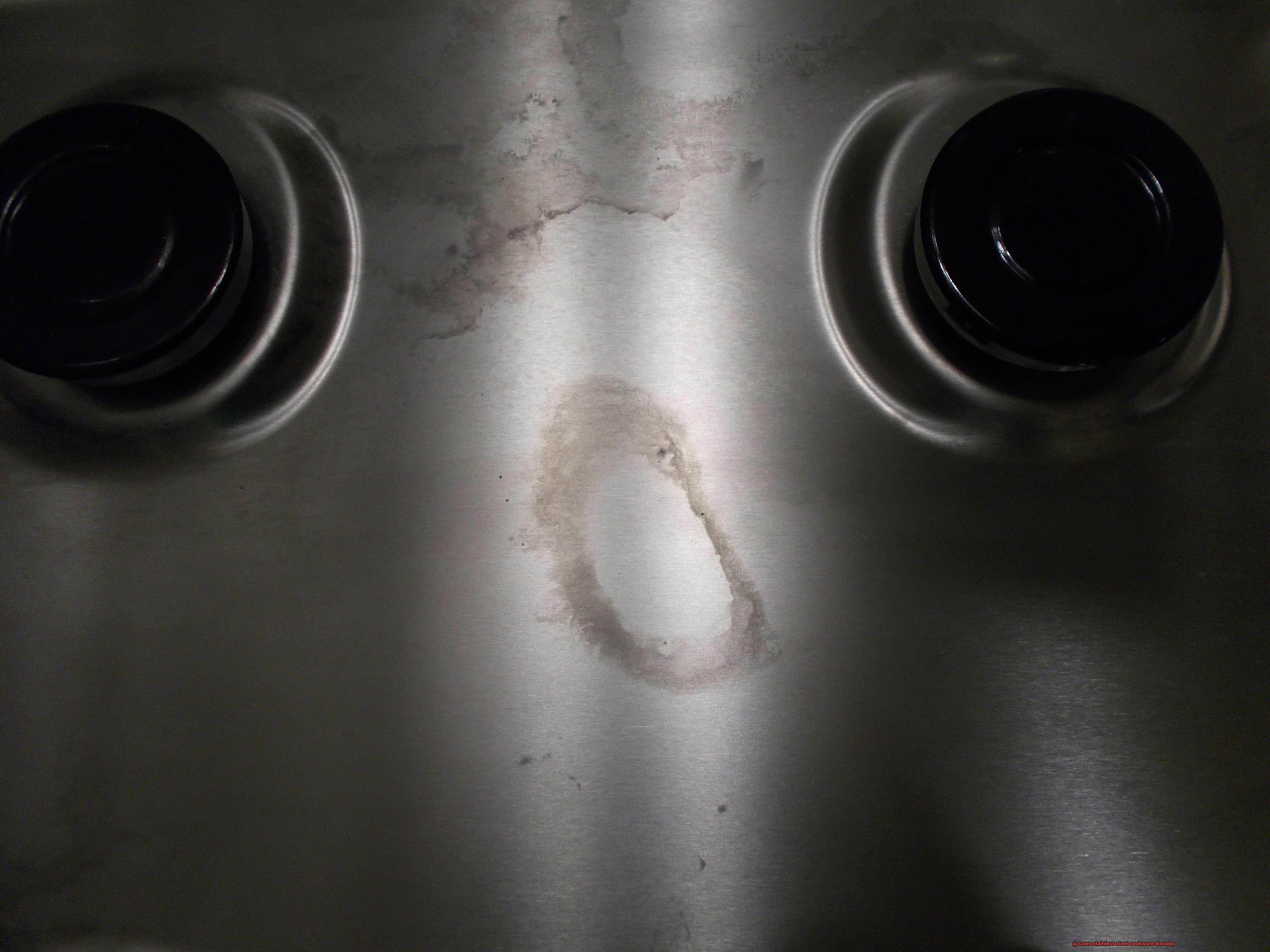
Does Discoloration Affect Performance?
To answer this question, let’s dive a little deeper.
Discoloration on stainless steel cookware can be caused by heat, food residue, and minerals in water. While it may not directly affect the cookware’s ability to distribute heat or cook food evenly, it can be an indication of other issues that could impact performance.
For example, if food is sticking to the cookware and causing discoloration, it may be an indication that the cookware needs to be seasoned or that the cooking temperature needs to be adjusted. Similarly, if minerals in water are causing discoloration, it could potentially damage the cookware and affect its performance.
To maintain optimal cooking results, it’s essential to treat your stainless steel cookware with care. Use a soft sponge or cloth with mild soap and water to clean it and avoid abrasive materials like steel wool. Also, avoid cooking acidic foods for extended periods of time in stainless steel cookware to prevent discoloration.
P16xnzCWiec” >
Conclusion
In conclusion, stainless steel cookware is a top choice for its durability, modern appearance, and non-reactive properties. However, discoloration can be a frustrating issue that many home cooks face. Discoloration can arise from several factors such as hard water, overheating, exposure to acidic foods, and improper cleaning techniques.
To prevent discoloration on your stainless steel cookware, it’s crucial to use proper heat settings and cooking methods. Opt for low to medium heat when cooking with stainless steel and avoid preheating an empty pan for too long. Using heavy-bottomed cookware can also help distribute heat evenly and prevent hot spots that cause discoloration.
Cleaning your stainless steel cookware with gentle cleaning solutions and drying it thoroughly after each use can also prevent the negative effects of hard water damage. Moreover, avoiding abrasive cleaners or scrubbers that can scratch the surface of the metal is vital.
While discoloration may not directly impact the cookware’s ability to distribute heat or cook food evenly, it could indicate other issues that affect performance. Therefore, treating your stainless steel cookware with care is essential in maintaining optimal cooking results.
In summary, by understanding the causes of discoloration and taking preventive measures against them, you can keep your stainless steel cookware looking brand new for years to come.

